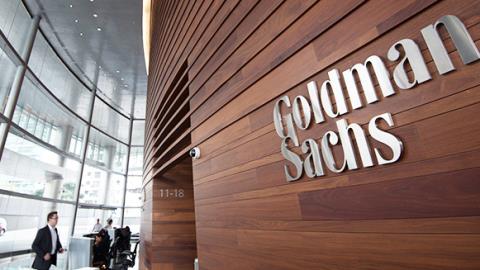Add your promotional text...
10 Questions Defining the U.S. Economy in 2025: Insights from Goldman Sachs
Synopsis: Goldman Sachs has identified 10 pivotal questions that will shape the U.S. economy in 2025. From GDP growth surpassing expectations to the resilience of consumer spending and the Federal Reserve’s monetary policy shifts, this analysis provides a detailed outlook on the economic challenges and opportunities ahead.
MARKETSGLOBAL
By Alankrita Shukla
1/1/20253 min read


As the U.S. economy transitions into 2025, Goldman Sachs economists have outlined 10 critical questions that could define the nation’s financial trajectory. These questions highlight potential growth opportunities, challenges in policy, and broader market dynamics. Let’s dive into the nuanced analysis and predictions shaping the economic landscape for the upcoming year.
1. Will GDP Growth Exceed Consensus Forecasts?
Goldman Sachs projects U.S. GDP growth at 2.4% for 2025, significantly higher than the consensus estimate of 2.0%. This optimism is attributed to robust private domestic demand and a surge in business investments fueled by advancements in artificial intelligence and federal initiatives like the Inflation Reduction Act. Such factors could sustain an elevated growth trajectory, setting the stage for a dynamic economic year.
2. Can Consumer Spending Stay Strong?
Consumer spending, a major driver of the U.S. economy, is expected to grow by 2.3% in 2025. This resilience is supported by multiple factors: solid real income growth, a buoyant labor market, and wealth effects stemming from rising equity markets. Goldman’s outlook suggests that these combined forces will maintain consumer confidence despite external uncertainties.
3. Will the Labor Market Continue to Soften?
Contrary to concerns about a softening labor market, Goldman Sachs forecasts stability. The unemployment rate is expected to decline slightly to 4% by the end of 2025. Slowing immigrant labor supply and sustained demand growth are key contributors to this outlook, reflecting a tight labor market even amid broader economic shifts.
4. What Will Happen to Core PCE Inflation?
Core PCE inflation, a crucial indicator of economic stability, is predicted to decline to 2.1% by the end of 2025. Easing wage pressures and the dissipation of catch-up inflation are the primary reasons for this downward trend. This aligns with Goldman’s view that inflation will gradually approach the Federal Reserve’s target.
5. Are Fed Rate Cuts on the Horizon?
Goldman Sachs anticipates three Federal Reserve rate cuts in 2025, occurring in March, June, and September. This dovish approach underscores confidence in inflation easing and reduced economic risks. The cuts aim to provide a cushion for economic growth, signaling a shift in monetary policy as inflation stabilizes.
6. Will the Neutral Rate Estimate Be Revised?
The Federal Reserve is expected to adjust its median neutral rate estimate to 3.25% or higher, reflecting stronger demand dynamics. This shift highlights the evolving economic environment, requiring policymakers to recalibrate their expectations.
7. Will President-elect Trump Intervene with Fed Leadership?
Goldman Sachs does not foresee President-elect Donald Trump attempting to fire or demote Federal Reserve Chair Jerome Powell. Historical legal precedents suggest that removing the Fed Chair for failing to deliver rate cuts is unlikely to hold up in court. The bank believes the White House will avoid such confrontations, focusing instead on other economic priorities.
8. How Will Immigration Policy Evolve?
Net immigration is projected to decline to 750,000 annually, aligning with stricter policies under the Trump administration. This reduction could impact labor supply and economic growth, particularly in sectors reliant on immigrant workers.
9. Are Trade Tensions and Tariffs Set to Escalate?
Goldman Sachs expects an increase in tariffs on Chinese imports, though a universal tariff scenario is deemed improbable due to its potential economic and political risks. Higher tariffs could strain global trade relations but are unlikely to derail the broader economy.
10. What About Federal Budget Challenges?
Deficit reduction appears unlikely in 2025. Goldman Sachs highlights that increased federal spending, particularly on defense, will counterbalance fiscal constraints. While modest gains in tariff revenue may offset some expenses, a significant shift in budgetary priorities is not expected.
A Broader Market Perspective
The stock market remains a focal point for investors navigating economic volatility. With valuations soaring in 2024, many are cautious about further investments. However, Goldman’s insights suggest potential opportunities, particularly in sectors benefiting from technological advancements and federal incentives.
Key Takeaways for 2025
The U.S. economy is poised for growth, albeit with challenges in trade and fiscal policies.
Consumer spending and labor market stability remain bright spots in the economic outlook.
Federal Reserve actions will play a pivotal role in shaping financial conditions.
Geopolitical and policy shifts will continue to influence economic sentiment.
As we move into 2025, the answers to these questions will shape not only the U.S. economy but also global financial markets. Investors, policymakers, and businesses alike will need to stay vigilant as these dynamics unfold.
